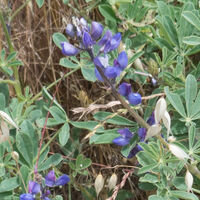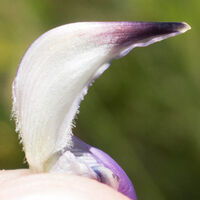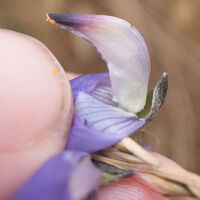arroyo lupine
Lupinus succulentus
Member of
lupines (genus Lupinus)
legume family (family Fabaceae)
dicots (class Magnoliopsida)
purple in flowering plants




- habit: annual, often appearing perennial herb, 20–100 cm, sparsely hairy, fleshy
- leaf: petiole 6–15 cm; leaflets 7–9, 20–60 mm, 7–20 mm wide, adaxially glabrous
- inflorescence: 9–15 cm, flowers whorled; peduncle 5–9 cm; pedicels 3–7 mm; bract 3–5
- flower: 12–18 mm; calyx 4–7 mm, lips ± equal, upper lobed; petals generally blue-purple (white, pink, lavender), banner spot white, magenta in age, wings sparsely ciliate on upper margins near claw
- keel upper, lower margins ciliate near claw, glabrous from middle to tip
- common
Toxicity of blue bonnet, lupine (Lupinus spp.):
4 – Ingestion of these plants, especially in large amounts, is expected to cause serious effects to the heart, liver, kidneys or brain. If ingested in any amount, call the poison center immediately.
Locations: Months: For more details, use advanced search.
Chris’s observations: 30 (19 are research grade)
Taxon info: iNaturalist – Calflora – CalPhotos – Jepson eFlora – FNA
Bay Area species: iNaturalist – Calflora